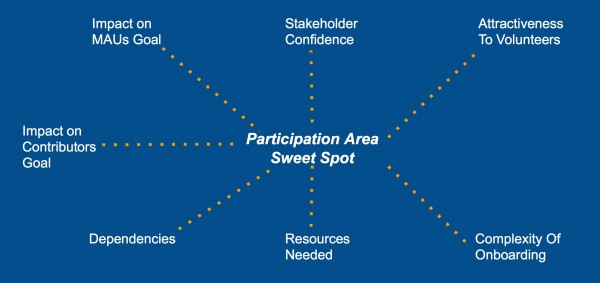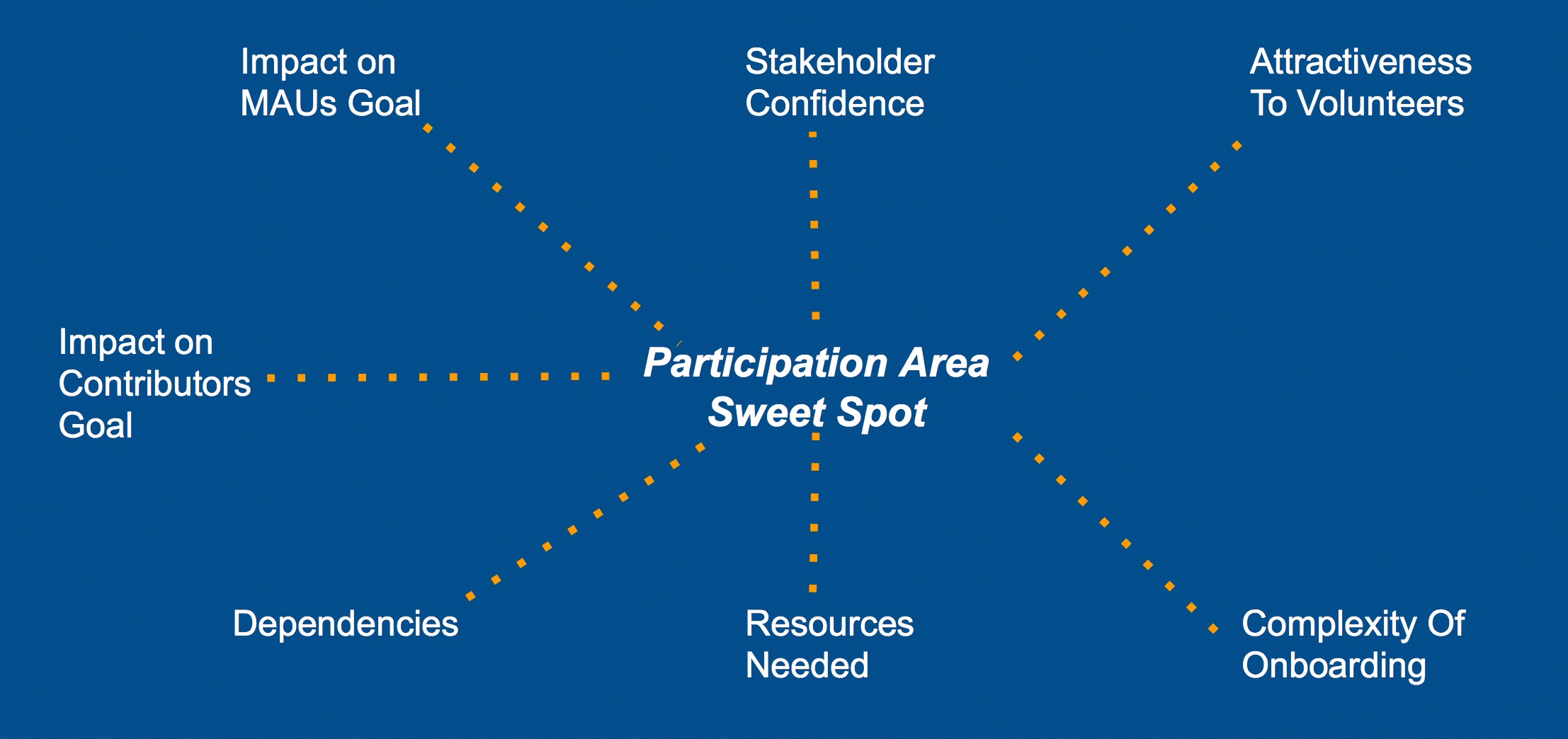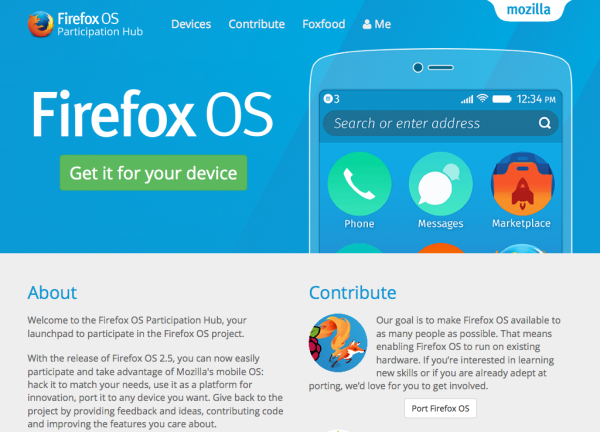TL;DR
Though a great deal was achieved and accomplished through the Participation Team’s collaboration with Firefox OS, a major realization was that participation can only be as successful as a team’s readiness to incorporate participation into their workflow.
Problem Statement
Firefox OS was not as open a project as many others at Mozilla, and in terms of engineering was not structured well enough to scale participation. Firefox OS was identified as an area where Participation could make a major impact and a small group from the Participation Team was directed to work closely with them to achieve their goals. After the Firefox OS focus shift in 2015 from being partner driven development to user and developer driven, participation was identified as key to success.
The Approach
The Participation Team did an audit of the current state of participation. We interviewed cross-functional team members and did research into current contributions. Without any reliable data, our best guess was that there were less than 200 contributors, with technical contributions being much less than that. Launch teams around the world had contributed in non-technical capacities since 2013, and a new community was growing in Africa around the launch of the Klif device.
Based on a number of contribution areas (coding, ports, foxfooding, …), we created a matrix where we applied different weighted criteria. Criteria such as impact on organizational goals, for example, were given a greater weighting. Our intent was to create a “participation sweet spot” where we could narrow in on the areas of participation that could provide the most value to volunteers and the organization.

Participation Criteria
The result was to focus on five areas for technical contributions to Firefox OS:
- Foxfooding
- Porting
- Gaia Development
- Add-ons
- B2GDroid
In parallel, we built out the Firefox OS Participation team, a cross-functional team from engineering, project management, marketing, research and more areas. We had a cadence of weekly meetings, and communicated also on IRC and on an email list. A crucial meeting was a planning meeting in Paris in September, 2015, where we finalized details of the plan to start executing on.
The Firefox OS Participation Hub
As planning progressed, it became clear that a focal point for all activities would be the Firefox OS Participation Hub, a website for technical contributors to gather. The purpose was two-fold:
- To showcase and track technical contributions to Firefox OS. We would list ways to get involved, in multiple areas, but focusing on the “sweet spot” areas we had identified. The idea was not to duplicate existing content, but to gather it all in one place.
- To facilitate foxfooding, a place where users could go to get builds for their device and register their device. The more people using and testing Firefox OS, the better the product could become.
The Hub came to life in early November.
Challenges
There were a number of challenges that we faced along the way.
- Participation requires a large cultural shift, and cannot happen overnight. Mozilla is an open and open source organization, but because of market pressures and other factors Firefox OS was not a participatory project.
- One learning was that we should have embedded the program deeper in the Firefox OS organization earlier, doing more awareness building. This would have mitigated an issue where beyond the core Firefox OS Participation team, it was hard getting the attention of other Firefox OS team members.
- Timing is always hard to get right, because there will always be individual and team priorities and deliverables not directly related that will take precedence. During the program rollout, we were made acutely aware of this coming up the release of Firefox OS 2.5.
For participation to really take hold and succeed, broader organizational and structural changes are needed. Making participation part of deliverables will go some way to achieving this.
Achievements
Despite the challenges mentioned above, the Firefox OS Participation team managed to accomplish a great deal in less than six months:
- we brought all key participation stakeholders on the Firefox OS team together and drafted a unified vision and strategy for participation
- we launched the Firefox OS Participation Hub, the first of its kind to learn about contribution opportunities and download latest Firefox OS builds
- we formed a “Porting Working Group” focused on porting Firefox OS to key devices identified, and enabling volunteers to port to more devices
- we distributed more than 500 foxfooding devices in more than 40 countries
- the “Mika Project” explored a new to engage with, recognize and retain foxfooders through gamification – The “Save Mika!” challenge will be rolling out 2016Q1
Moving Forward
Indeed, participation will be a major focus for Connected Devices in 2016. Participation can and will have a big impact on helping teams solve problems, do work in areas they need help with and achieve new levels of success. To be sure, before a major participation initiative can be successful, the team needs to be set-up for success 4 major components:
- Managerial buy-in. “It’s important to have permission to have participation in your work”. Going one step further, it needs to be part of day-to-day deliverables.
- Are there tools open? Do you have a process for bug triaging and mentorship? Is there good and easily discoverable documentation?
- Do they have an onboarding system in place for new team members (staff and volunteers)?
- Measurement. How can we systematically and reliably measure contributions, over time, to detect trends to act upon to maintain a healthy project? Some measurements are in place, but we need more.
We put Participation on the map for Firefox OS and as announced at Mozlando, the Connected Devices team will be doubling down its efforts to design for participation and work in the open.
We are excited about the challenges and opportunities ahead of us, and we can’t wait to provide regular updates on our progress with everyone. So as we enter the new year, please make sure to follow us on Discourse, Twitter, and Facebook for latest news and updates.
2016, here we come!
Brian, on behalf of the Participation Team.
(Originally posted on Brian King’s blog)



Adrian Custer wrote on
wrote on
Brian King wrote on
wrote on